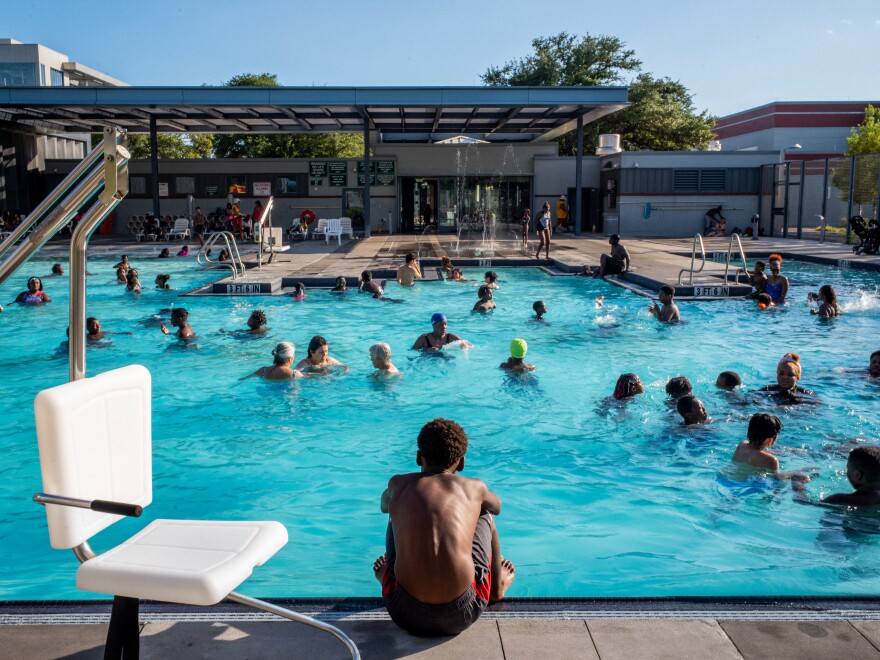Truth matters. Community matters. Your support makes both possible. LAist is one of the few places where news remains independent and free from political and corporate influence. Stand up for truth and for LAist. Make your year-end tax-deductible gift now.
After Years In Decline, US Drowning Deaths Are Rising Again

Drowning deaths in the U.S. were on the decline for decades, but a new report from the Centers for Disease Control and Prevention has found that fatalities have been increasing since 2020.
While it's not exactly clear what's causing the spike, public health experts believe the effects of the COVID-19 pandemic could be at least in part to blame.
Adam Katchmarchi, CEO of the National Drowning Prevention Alliance (NDPA), said there were signs recently that fatal drownings were increasing, but the national figures were stark.
"Shocking, to say the least, that we have seen these dramatic increases," Katchmarchi said.
According to the CDC report, there were around 4,000 accidental drowning deaths in the U.S. in 2019. That jumped to more than 4,500 fatalities annually in 2020, 2021 and 2022 — roughly a 10% increase.
During the pandemic, public pools closed and lifeguards went home
The reasons for the increase in drowning deaths aren't known for certain, but public health officials say the lockdowns and closures related to the pandemic affected how people interacted with the water recreationally.
LAIST SAFETY TIPS FOR THE WATER
Now that the weather is warmer, Angelenos are looking for ways to get outside and cool off — but conditions in the water can change quickly, and knowing how to stay safe in the water beforehand could make all the difference.
Check out our safety tips for the beach and the outdoors.
CDC Division of Injury Prevention health scientist Tessa Clemens, who was the lead author of the report, said in a follow-up email to NPR that the causes behind the increase in fatalities were "likely complex."
"However, we know that many public pools closed during the COVID-19 pandemic, which limited the availability of swimming lessons," Clemens said. "Once pools reopened, many facilities faced shortages of trained swimming instructors and lifeguards, which further reduced availability of swimming lessons and safe swimming areas."
Bill Ramos, an associate professor at the Indiana University School of Public Health, agreed that changes to daily life over the past several years likely had an impact on swimming safety, and said that swimming education had been growing before the pandemic.
"Basically the faucet was turned off," Ramos said. "Lifeguards were not being trained. Children were not being taught swim lessons."
Drowning prevention experts recommend that everyone learns to swim, yet the CDC report found that an estimated 40 million American adults don't know how. And nearly 55% have never taken a swimming lesson, which can be expensive and difficult to access for some people.
Ramos said he hopes the country's first national water safety plan, which was released last year, will help reduce the number of drownings nationwide.
Young kids and older adults face the most risk
For children between the ages of 1 and 4, drowning is the leading cause of death, according to the CDC. That age group saw a 28% increase in drowning fatalities between 2019 and 2022.
Adults 65 and older experienced the second-highest rate of drowning, the report found.
There were also racial and ethnic disparities in drowning deaths. American Indian and Alaska Native people had the highest rate of drowning fatalities among race and ethnic groups, followed by Black people, who saw a 28% spike in fatalities between 2019 and 2021.
"Hopefully this is a wake-up call to the country on a number of fronts," Katchmarchi said. "I think most people don't recognize sometimes the complexity of the drowning problem in the United States, but also that it is 100% preventable and it doesn't have to be this way."
How to stay safe
As the summer season approaches, drowning prevention advocates say there's plenty you can do to reduce the risk of drowning for yourself and your loved ones.
For backyard pools, Ramos said groups should designate one, non-distracted person whose sole focus is keeping an eye on the swimmers. They can wear a tag around their neck, and if they have to get up they can give that tag to another person to ensure that someone is always paying attention to the pool.
"I'm not sure why we haven't done this, but in lifeguarding we say the lifeguard's job is patron surveillance. That's their No. 1 job," Ramos said. "We need to maybe be less afraid to say that to parents and caregivers as well."
Katchmarchi says other critical safety measures include recommendations that everyone learn how to swim and that those taking care of others know how to give CPR with rescue breaths in case of an emergency.
Pools should be equipped with fences and alarms, and swimmers should use life jackets in certain situations, including open water, the NDPA suggests.
A drowning can occur in less than a minute, and prevention advocates say it may not look like what people expect from TV or the movies.
"It's certainly not the event that we describe usually where a person is screaming and yelling and waving. That person is still what we consider a distressed swimmer," Ramos said.
"They haven't really become an active drowning victim yet, because once you reach that point, it's a very silent act. And it's not very long after that before they're in real trouble."







